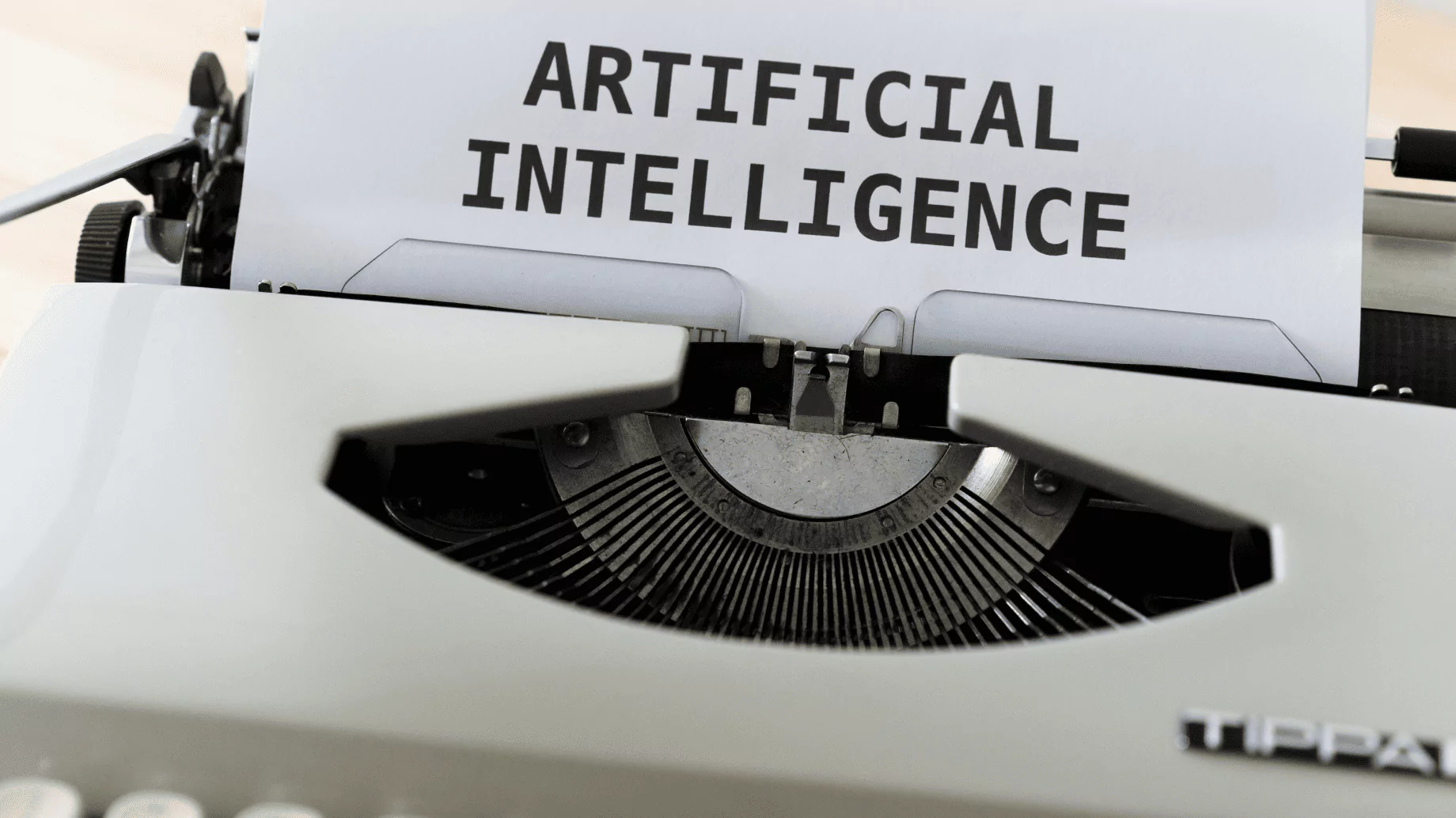Artificial intelligence (AI) opens up new opportunities in various fields, and AI picture recognition is one of its most exciting applications. Machines can see the world in a way only humans could before, analyzing images with precision, speed, and efficiency.
From automating medical diagnostics to enhancing road safety, AI is changing our perception of reality. In this article, we will explore how image recognition with the help of AI works and what prospects this direction opens up for the modern world.
What is AI image recognition?
AI image recognition software is a technology that uses artificial intelligence to analyze and interpret images in digital format. With the help of unique algorithms and deep neural networks, computer systems can recognize and classify objects in images, identify their properties, and determine relationships between elements of the scene.
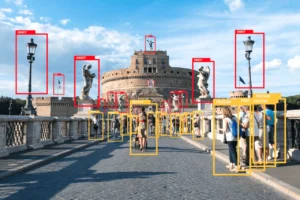
This technology reproduces the process of human visual perception. Still, it performs it automatically, quickly, and with greater accuracy, which allows it to be used in numerous areas where, previously, the processes would have required human intervention.
In fact, AI image description is based on the principle of machine learning (ML), which is when a computer system learns to recognize certain patterns based on huge data sets. For instance, if you want to train an algorithm to recognize cars, thousands or millions of images of different vehicles are shown, and each image has a corresponding label. Thanks to this, the system will gradually learn to identify cars in new, unfamiliar images by analyzing features such as shape, color, texture, contours, and other visual characteristics.
One of the key features of machine learning image recognition is its ability to learn from large data sets. Algorithms use millions of images to recognize certain patterns and correlations between different image elements. This approach allows the system to improve accuracy and achieve impressive results even in difficult situations.
Most modern AI analyze image technologies use deep neural networks, particularly convolutional neural networks (CNN). These architectures are designed specifically for image processing and analysis. Each layer of the neural network detects certain features in the image – from simple lines and contours to more complex details and structures.
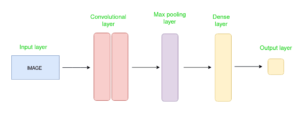
The convolutional layer uses filters to detect key features in the input image, while the pooling layer reduces the image’s dimensions to decrease computational load. The dense layer is responsible for making the final prediction. The network optimizes its filters through backpropagation and gradient descent during training.
How AI image recognition works
Image recognition AI process involves several key phases, and each plays a vital role in training computer systems to analyze and recognize objects in images accurately. Let’s check how this technology works, moving through five main steps.
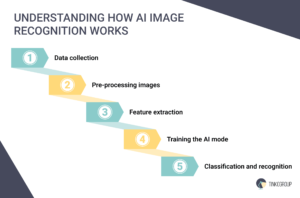
Step 1: Data collection
To train a model, it is necessary to collect many images representing different objects, scenes, or situations. These can be both ordinary photographs and specific medical images or satellite images. The data must be varied, allowing the model to learn to recognize objects in different conditions, with different angles, lighting, and background objects.
Typically, data is stored in structured sets where each image is accompanied by a label indicating what it represents. These labels can range from simple designations such as “dog” or “man” to more complex ones that indicate different characteristics such as species, color, or other specifications.
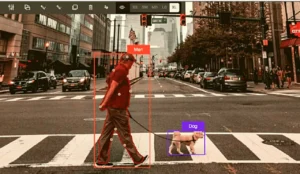
Step 2: Pre-processing images
After data collection, the next stage of AI picture recognition is image pre-processing. This step is critical because the input data can have different formats, sizes, colors, and other parameters that can affect the quality of model training. The key tasks of pre-processing include:
- Resize images to default settings so all images are the same shape. This is important for the efficient operation of neural networks since they usually accept images of a fixed size.
- Pixel normalization, which involves converting pixel values to a specific range (usually 0 to 1) to improve stability and learning speed.
- Image augmentation, which involves creating new variations of source images by applying transformations such as rotation, displacement, or brightness changes. This allows the model to be more robust when changing input data.
Step 3: Feature extraction
It is a process in which algorithms analyze images and highlight important features that can be useful for further training. Features can include outlines, textures, colors, and other visual elements. In tasks where spatial relationships and precise structure matter—such as pose estimation or facial analysis—models rely on keypoint annotation in computer vision rather than coarse object regions.
This step is usually implemented using deep neural networks, particularly CNNs, which specialize in image processing. These networks automatically learn to highlight the most critical features of images, which helps the model understand which elements are most informative for object recognition.
Step 4: Training the AI model
After feature extraction, the model moves to training. This stage of AI image identification involves using the collected and pre-processed data to train the algorithm. At the base of the learning process is an error backpropagation technique that helps the model adjust its predictions based on how far they differ from the correct answers.
The model tries to minimize error. It accesses multiple images during training, allowing it to adjust its weights and improve accuracy. This process can take from several hours to several weeks, depending on the amount of data and the complexity of the model.
Step 5: Classification and recognition
The last step is classification and recognition. After training, the model is ready to process new, previously unknown images. At this stage, the algorithm analyzes the input data using the features that were extracted during training and classifies the objects in the images according to the training data.
The model outputs probabilities for each class, allowing the system to determine which image best fits a given category. This is an important point because a high level of classification accuracy can significantly affect the effectiveness of the technology in various fields, such as health care, security, or even entertainment.
Benefits of AI image recognition
Below, we’ll analyze how AI technologies in image recognition improve accuracy, speed, cost savings, and real-time data processing capabilities.
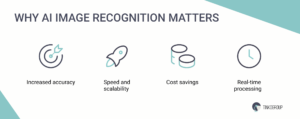
Increased accuracy
One of the primary benefits of using AI for image recognition is its impressive accuracy in object classification and identification. With advanced machine learning techniques, including deep neural networks, systems can effectively learn from large amounts of data and accurately identify various objects, even in complex environments.
This increased accuracy is critical in critical industries such as healthcare, where accurate identification of pathologies in medical images can save lives. For instance, AI can help recognize cancer cells in biopsies with high accuracy, allowing doctors to make more informed treatment decisions.
Speed and scalability
Image analyzer AI technologies are accurate and extremely fast. The algorithms can process huge amounts of images in a short amount of time, making them ideal for large-scale projects. This is important, especially in a business environment where the speed of decision-making can affect competitiveness.
For example, image recognition systems in retail can quickly analyze large quantities of products on shelves, automatically detecting product shortages or misplaced items. This allows you to maintain the efficiency of operations and optimize stocks without significant time costs.

Reliable Data Services Delivered By Experts
We help you scale faster by doing the data work right - the first time

Cost savings
The implementation of image recognition AI systems also leads to significant cost savings. Automation of processes that previously required significant human resources reduces labor costs. For example, in the agricultural sector, AI can automatically recognize pests or plant diseases in images, allowing agronomists to quickly respond to problems without requiring lengthy inspections.
In addition, increased accuracy and speed of work reduce the risk of errors that can lead to financial losses. In security, for example, AI-powered facial recognition can help prevent theft or fraud, saving businesses money.
Real-time processing
It is another essential advantage that AI provides in image recognition. This opens up new opportunities for interactive applications, where it is crucial to respond to environmental changes quickly. For example, in video surveillance systems, artificial intelligence can instantly analyze video streams, detecting suspicious activity or lost items, allowing law enforcement agencies to respond quickly.
In the transportation industry, real-time AI image recognition online technologies can be used for traffic monitoring, license plate recognition, or accident detection. This improves road safety and optimizes traffic, reducing traffic jams and travel time.
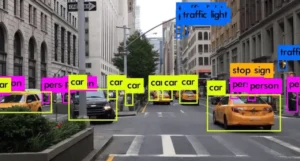
The future of AI image recognition
As mentioned above, AI that can analyze images has significantly impacted various industries. Artificial intelligence technologies are predicted to revolutionize how we perceive, analyze, and interact with visual content in the coming years. Below, we have prepared several essential areas in which the future of image recognition will evolve.
Deep learning and self-learning systems
Deep learning will be the engine of the future of AI image description. Using neural networks that can independently adapt to new data, recognition systems can learn from huge amounts of information. This will lead to even greater accuracy in object identification, even in complex or changing environments.
Integration with augmented and virtual reality (AR and VR)
The future of image recognition AI is closely intertwined with augmented and virtual reality technologies. These technologies will make image recognition more interactive and accessible to ordinary users. Imagine pointing your smartphone at an item, and the app automatically provides you with information about it, including user reviews, history, and purchase options.
In the education sector, this can lead to creation of interactive learning materials where students can learn topics in real-time by looking at objects and receiving additional data through AR. This technology will increase student engagement and make learning more effective.
Expanding applications in security
In fact, security will also be one of the key areas where artificial image recognition will play a crucial role. Video management systems equipped with artificial intelligence will be able to record events and analyze them in real time, detecting suspicious activities, which allows prompt response to possible threats. Combined with facial recognition, these technologies will significantly increase security in public places and at large events.
Ethics and regulation
With the development of image description AI technologies, questions of ethics and regulation also arise. As in many other areas, it will be necessary to find a balance between innovation and the protection of human rights.
For example, it is vital to establish clear rules regarding using facial recognition technologies to avoid misuse and ensure personal data privacy. Interaction between technology companies, government agencies, and society will be key to creating a safe and ethical environment for the use of these technologies.
Image annotation services at Tinkogroup
Our skilled annotators have experience in various fields, including medical, automotive, retail, and many more. This allows us to deliver high-quality image annotation services that consider each industry’s specifics.
At Tinkogroup, we use proven quality control methods to ensure all annotations meet the highest standards. Our expert team is constantly checking to avoid errors and inaccuracies.
Thanks to optimized work processes and modern tools, we can perform a large volume of annotations in a short time without sacrificing quality. This allows our customers to receive ready data to train their models quickly.
For example, our specialists delivered the recognition project using the Labelbox platform to identify and assign the correct brand labels within a diverse set of website screenshots.
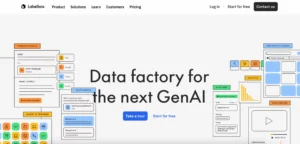
The website screenshots featured various brand logos, and our objective involved accurately matching each logo with its corresponding brand name from a provided list. We designed this labeling process to simulate training a machine learning model to recognize and classify brand logos.
By carefully annotating the images, we provided valuable data that supports the development and refinement of advanced image recognition technologies. This project enhanced the model’s ability to differentiate between brands and played a critical role in advancing the overall effectiveness of machine learning systems in visual recognition tasks.
Conclusion
AI picture recognition is just the beginning of a significant technological revolution changing our world in real time. Each new step in its development opens new perspectives for science, medicine, business, and other domains. However, the main thing is that AI helps us better understand and analyze visual information, improving our quality of life and accelerating our progress.
Regarding integrating AI image description into your projects, our professional team can guide you through every phase, from conception to execution. Contact us, and we will deliver an outstanding solution to drive your business to new heights.
Is there an AI that can identify images?
Several AI systems, like Google Vision AI and IBM Watson, specialize in image recognition using deep learning models. These tools can detect objects, patterns, and even faces, enabling automation in retail, healthcare, and security industries.
Can AI identify objects in images?
AI can accurately identify objects in images using convolutional neural networks (CNNs). These networks allow AI to detect multiple objects and provide details like labels and locations. This technology is essential for applications such as autonomous driving and e-commerce.
How to do image recognition?
Image recognition involves collecting a diverse image dataset, pre-processing images by resizing and augmenting, extracting features using techniques like CNNs, training the model with training data, and testing the model for classification and recognition of new images in real-world applications.

